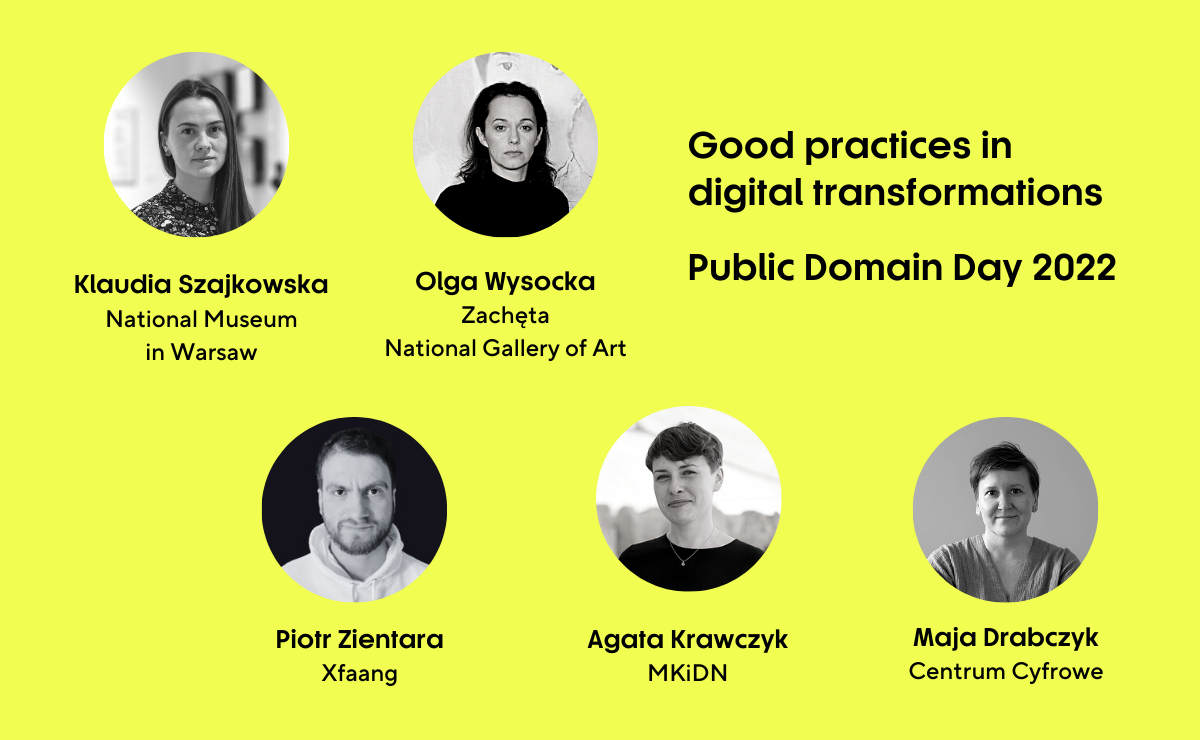On Public Domain Day, we discussed good practices in digital transformations
When digitizing and sharing collections of cultural institutions, we need to focus on quality, not quantity. On Public Domain Day, we discussed good practices in digital transformations.

January marks the month of Public Domain, with another set of collections and art pieces becoming free for audiences. The Public Domain is our shared reservoir of cultural heritage which we can benefit from without any limitations. For several years, the Polish artistic community has celebrated this day with free access to thousands of artworks.ô
On that occasion, it is worth remembering that transitioning some art pieces to the Public Domain does not directly mean we can benefit from high-quality materials. The GLAM sector has put a long-standing effort to digitalize their collections, but to allow users to get the most of it, this process must be performed at the highest level possible.
In our discussion, we have sought answers to the most challenging questions, such as: How to wisely build and distribute digital collections? How to create communication paths with virtual audiences to let them explore and reuse online heritage creatively?
We invited representatives of two top cultural institutions in Poland setting the trends on the cultural map of Poland. First, Klaudia Szajkowska from the National Museum in Warsaw (Digital & Visual Documentation Department). In 2020, the Museum launched Digital MNW, a platform with 65,000 digitalized artworks.
And second, Olga Wysocka, Deputy Director of Zacháta – National Gallery of Art. Zacháta and Centrum Cyfrowe Foundation are producing one of the most significant Polish projects on the digitizing process and open access system, called “Open Zacháta“
We couldn’t hold this discussion without a technological partner, the CEO of Xfaang, who is responsible for the IT aspect of the “Open Zacháta” project. We also hosted Agata Krawczyk, the Digital Culture Team coordinator in the Ministry of Culture and National Heritage. The discussion was led by Maria Drabczyk, head of the Policy team in Centrum Cyfrowe.
In past years, cultural institutions have made tremendous efforts to stay in the loop of the digital zone. The current challenges of those institutions include remaining open, attractive, and competitive in line with their mission and key principles. Should they take actions solo or in partnerships? What kind of collaborations could push forward their activities and presence among other choices of entertainment? How to foster fruitful partnerships between cultural institutions with researchers, creative and technological enterprises, and simultaneously to meet the needs of their audiences?
Our experts drew attention to the following key points enabling dialogue and effective cooperation:
Great concepts which rely on mission are the nexus to all team actions and components aiming towards reaching the goals. They will also enable them to execute the mission of their institution. Without those elements, each initiative will be reduced to a default action, with the main goal being to give away the grants and without any ambitious perspective in sight.
We can search through examples of good practices such as (Trendbook IAM) and other sources and be more open to partnerships which open the doors to achieving the mission in the virtual world.
Quality of concepts should go in line with mission and vision. At the same time, it should remain the most crucial factor while creating and distributing new content that cultural institutions offer to digital participants of culture.
Clear communication and education inside the organizations are essential factors for employees to embrace the need for change and the opportunities it can bring for the institution.ô
Only then will the staff be open to new solutions and understand the benefits of creative and fresh collaborations with businesses outside the organization.ô
Dialogue and cross-institutional teamwork are key to success and should be promoted on all levels of activity in the institution. Digital projects need a joint effort from partners with diverse experience (public institutions, NGOs, public administration, IT enterprises, etc.) It is fundamental that all partners are equally engaged in the process of creating a new concept. Teamwork, not competition, will render collective action more productive.
Great IT projects are a continuous process. They develop like a town that grows and upgrades with time. It is necessary that cultural institutions change their position on digital products as finished goods. This paradigm shift will allow these projects to survive and thrive, not being discarded and buried after one year. Staying open to modernization and modifications allows them to be upgraded and adapted to the needs of the users.
Recording of the meeting is available in Polish: